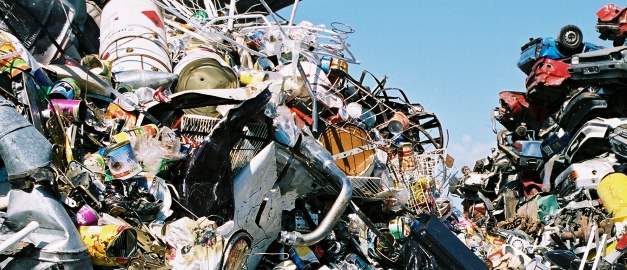
Photo: Stena recycling AB
Metal and mineral recovery
The world’s need for metals and minerals is immense and continues to grow. Recycling and reuse is one of the most energy efficient measures to limit the mining and mineral industry’s impact on the environment.
There are becoming more and more of us on planet earth, and with that comes a growing need for housing, infrastructure and technical products, ranging from smartphones and refrigerators to environmental engineering solutions. just to name a few. During the 20th century, economic growth was strongly linked to the extraction of primary raw materials. In recent decades, growth has been decoupled in some parts by the fact that most industries, such as the electronics industry, need much less raw materials per unit produced, for financial reasons and by means of improved design. On the other hand, many more units are sold today than was the case 30 or 50 years ago.
For the earth’s resources to be sufficient, there is a significant interest in increasingly switching to what is referred to as the circular economy. A circular economy means that with everything from better design of products and new business models to improved technology, financial and environmental instruments, along with intentional behaviour, recycling and reuse, the need for primary raw materials in the society is reduced. One important principle for the circular economy to work is that “waste” is looked at as a resource. An essential piece of the puzzle in these efforts is to obtain a picture of what secondary assets exist in the society.
In Sweden, we are very good at recycling metals. Since the 1950s, the recycling of precious metals and scrap containing iron, steel and base metals has increased sharply, from 50% to 92% in 2010. As it concerns less common metals, recycling is still modest, yet we receive about one-half of Europe’s electronic scrap in our country.
There are also untapped metal assets in mining waste, industrial landfills, and abandoned infrastructure in our cities. In order to make the use of these possible, additional knowledge, development of technology, and changed financial and environmental instruments are required.
The Swedish metal producing industry, one of our most important basic industries with a high share of our exports, continues to a large extent to take the raw materials from the Swedish bedrock. But it also uses, to a greater extent, recycled metals. The table below shows the usage of various metals in Sweden, as well as our production and how much is recycled, based on international statistics. Sweden has almost no extraction of less common metals. These metals can be recycled once volume and technology have been developed.
Metal production in Sweden
The future use of steel in the world is expected to increase, due to globalisation and wealth formation in the former developing countries. Even at maximum levels of recycling of metals, primary metals from mining will represent at least the volume it has today.
Last reviewed 2022-06-17
